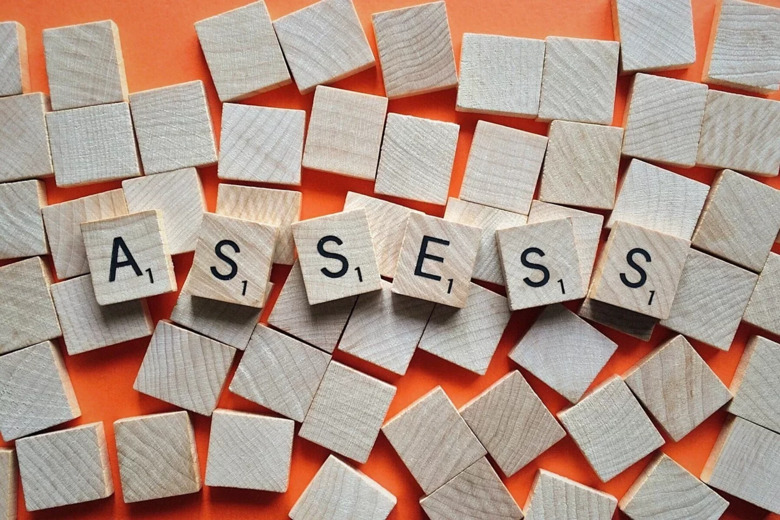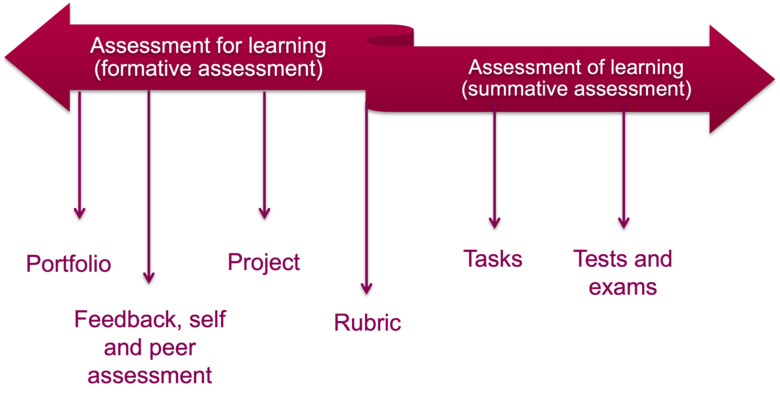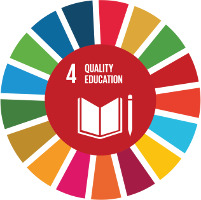Creating equitable and inclusive assessment practices
Assessment is about more than evaluating students. It is the on-going activities that allow students and instructors to understand student progress on meeting the course learning objectives. This page is aimed at helping educators understand assessment, as well as providing further resources to aid in creating equitable and inclusive assessment practices.

Why is assessment important?
Through assessment practices, students can become aware of what they know and don’t know, and educators can adapt their teaching and course content to better meet the needs of all students.
Continuous assessment provides regular feedback about the learning and teaching process. Assessment can reinforce the efficacy of teaching and learning. It also encourages the understanding of teaching as a formative process that evolves over time with feedback and input from students. This also contributes to creating an open classroom environment.
Some good practice principles include:
- Student learning is prompted by early, low-stakes, frequent assessment and feedback for learning;
- Students will rise to high expectations if they have appropriate support;
- Assessments should use multiple and varied methods of monitoring student performance (Brown & Glasner, 2013);
- Student learning is enhanced by exercises or assignments that promote self-assessment and self-awareness.
Offering a range of assessment methods not only reflects the needs and prior experiences of a diverse student body, but also enables students to develop a broader range of personal and employability skills.

What is assessment?
Assessment is the practice of observing and evaluating student progress throughout a course to enhance student learning. The tools and techniques of assessment include different types of grading and a range of many activities which allow instructors and students to understand the full, faceted picture of the learning which is taking place.
Assessment is made of formative assessment (assessment for learning), and summative assessment (assessment of learning). While formative assessment should be the main form of assessment (including feedback, peer- and self-assessment), it should be complemented by systematic summative assessment at the end of a course:
- Summative assessment involves testing to decide what a learner can do at any particular point in time. This could be in the form of a test at the end of a unit of work or final test. Summative assessment occurs at the end of a period of learning. Learners receive a numerical score, grade or certificate.
- Formative assessment involves making a (self-)diagnosis of a learner’s capabilities with an immediate effect on the learner’s next steps in the learning process. It involves teachers and learners adapting their original plans and using the learner’s performance to determine goals for future improvement. It focuses on the individual during the course of a period of learning and learners receive qualitative feedback.
- In feedback, peer- and self-assessment, learners assess each other’s or their own learning. This prepares students to meet their future learning needs by providing them with the skills to make judgments on the quality of their own work and the efficacy of their own process.
What students learn and how they learn it depends on how assessment is designed. The idea that students have of what they have to learn depends not on what the teacher[s] says, but on what [they] take into account to assess students.

How does assessment support quality?
At the course and curriculum levels, clear, transparent, inclusive and equitable assessment enhance the credibility and comparability of quality assurance standards.
Sound assessment practices help you:
Focus on student learning:
- Student learning becomes central when the focus is on how students will be assessed throughout and by the end of a course;
- It is not assessment of learning, but assessment for learning that is of primary interest;
- The vital task for educators is to facilitate and support attainment of their objectives.
Connect outcomes, teaching, and assessment:
- Assessment determines what, how, and when the student studies and it must therefore be aligned with ILOs.
- This is facilitated by the fact that assessments are transparent in their design, including clearly articulated step-by-step instructions as well as the criteria for success;
- It is easier to plan teaching to facilitate learning when assessment is clear and unambiguous.
Improve the quality of teaching and learning
- It is easier to examine the fulfilment of assessment criteria if they are concrete;
- Assessment allows you to monitor the quality of learning, and adapt your teaching accordingly.
We need to see the teaching, learning and assessment practices of courses as part of the development of learners’ lifelong learning how to learn skills no matter what other requirement they have to satisfy. These learning-how-to-learn skills require a sophisticated appreciation of self assessment and how to build a context in which learning can not only be undertaken, but achievements assessed and judgements made about competency.
Related educational resources
 Photo: N/A
Photo: N/AToolkit for Designing Assessments
This is a self-paced resource designed to provide guidance and suggestions for teachers who are new to designing assessments.
It will also provide ideas for those who are looking for inspiration or just want to consolidate existing knowledge on how to plan for assessments.

Formative assessment and feedback
The aim of the course is to support university teachers and supervisors to develop their ability to design and implement formative assessments that support student learning.
The course is held in Swedish.
Autumn 2025.
 Photo: Eric Cronberg
Photo: Eric CronbergSummative assessment
The aim of the course is to increase your awareness of how to create summative assessments to measure your students’ learning. The course also aims to stimulate a reflective approach to teaching and learning.
Autumn 2025.
